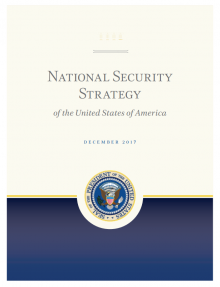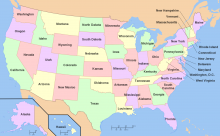Last week, I re-introduced our National Security Strategy with the first half of the president’s transmittal letter. Here is the rest of the letter, detailing the threats to America’s security and prosperity
We are rallying the world against the rogue regime in North Korea and confronting the danger posed by the dictatorship in Iran, which those determined to pursue a f lawed nuclear deal had neglected. We have renewed our friendships in the Middle East and partnered with regional leaders to help drive out terrorists and extremists, cut off their financing, and discredit their wicked ideology. We crushed Islamic State of Iraq and Syria (ISIS) terrorists on the battlefields of Syria and Iraq, and will continue pursuing them until they are destroyed. America’s allies are now contributing more to our common defense, strengthening even our strongest alliances. We have also continued to make clear that the United States will no longer tolerate economic aggression or unfair trading practices.
At home, we have restored confidence in America’s purpose. We have recommitted ourselves to our founding principles and to the values that have made our families, communities, and society so successful. Jobs are coming back and our economy is growing. We are making historic investments in the United States military. We are enforcing our borders, building trade relationships based on fairness and reciprocity, and defending America’s sovereignty without apology.
The whole world is lifted by America’s renewal and the reemergence of American leadership. After one year, the world knows that America is prosperous, America is secure, and America is strong. We will bring about the better future we seek for our people and the world, by confronting the challenges and dangers posed by those who seek to destabilize the world and threaten America’s people and interests.
My Administration’s National Security Strategy lays out a strategic vision for protecting the American people and preserving our way of life, promoting our prosperity, preserving peace through strength, and advancing American influence in the world. We will pursue this beautiful vision—a world of strong, sovereign, and independent nations, each with its own cultures and dreams, thriving side-by-side in prosperity, freedom, and peace—throughout the upcoming year.
In pursuit of that future, we will look at the world with clear eyes and fresh thinking. We will promote a balance of power that favors the United States, our allies, and our partners. We will never lose sight of our values and their capacity to inspire, uplift, and renew.
Most of all, we will serve the American people and uphold their right to a government that prioritizes their security, their prosperity, and their interests. This National Security Strategy puts America First.
You can read the full National Security Strategy here









